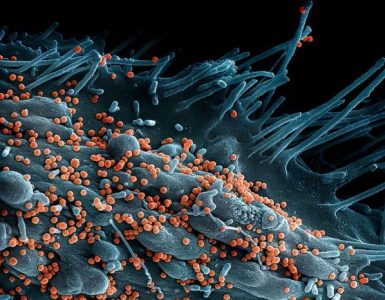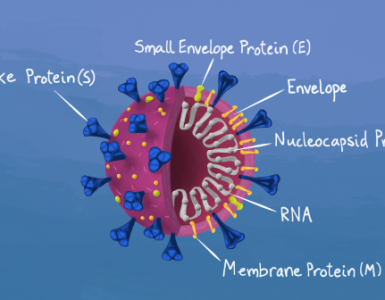The World Health Organization has declared mpox a public health emergency of international concern – a new variant of the virus has caused an outbreak in Central and West Africa and spread to Sweden
The World Health Organization (WHO) has declared a public health emergency of international concern over an ongoing outbreak of mpox – formerly known as monkeypox – in Central and West Africa. This is the second time in two years that the disease has spread enough to prompt such a declaration from the WHO. On 15 August, Swedish health officials confirmed a case as the first known infection outside of Africa with the mpox strain that is currently driving the outbreak.
What is mpox?
Mpox is an infectious disease caused by a virus that belongs to the same family as that which causes smallpox. It regularly spreads among animals in Central and West Africa such as rodents and monkeys, but occasionally jumps to people, causing small outbreaks.
There are two distinct lineages of mpox: clade I and clade II. Clade I is associated with more severe disease and higher risk of death. A subtype of clade I, called clade Ib, is driving the current outbreak, while the global mpox outbreak in 2022 and 2023 was spurred by a subtype of clade II.
So far, there is no evidence to suggest that clade Ib is more dangerous than the original clade I strain, said Jonas Albarnaz at The Pirbright Institute in the UK in a statement.
How many cases of mpox have there been in 2024?
The Africa Centres for Disease Control and Prevention reported on 13 August that there have been more than 17,000 suspected cases across the continent. “This is just the tip of the iceberg when we consider the many weaknesses in surveillance, laboratory testing and contact tracing,” the agency said in the statement.
There have been 15,664 reported cases and 537 deaths so far in the Democratic Republic of the Congo alone, according to the WHO. This exceeds the total seen in 2023, according to a statement by Tedros Adhanom Ghebreyesus at the WHO on 15 August.
Where has mpox been detected?
The current outbreak originated in a small mining town in the Democratic Republic of the Congo (DRC). The mpox variant has now spread to at least 11 other African countries, including four that had previously never reported mpox: Kenya, Rwanda, Burundi and Uganda. Mpox has also been detected in one person in Sweden.
What is the survival rate for mpox?
While more than 99.9 per cent of people who fall ill with clade II survive, mpox outbreaks of clade I have killed up to 10 per cent of people who become sick. Children and people who are immunocompromised or pregnant are especially vulnerable to severe disease.
What are the symptoms of mpox?
The first mpox symptom is usually a rash, which begins as a flat sore and then develops into a blister that may be itchy or painful. The rash tends to start on the face before spreading across the body and extending to hands and feet. People can also get lesions in their mouth or on the genitals or anus.
The rash and lesions usually last between two and four weeks and are often accompanied by other symptoms such as fever, headache, muscle aches, back pain, fatigue and swollen lymph nodes. Symptoms usually begin within a week of contracting the virus but can start anywhere from one to 21 days after exposure. However, some people can contract the virus without experiencing symptoms.
How does mpox spread?
Mpox is spread through close contact with people who have the illness. Usually this is through skin-to-skin contact, such as sex, kissing or touching. The virus can also spread through respiratory droplets and contact with contaminated materials such as bedsheets, other linens or sharp objects like needles. People remain infectious until all of their sores heal.
Mpox can also spread through contact with infected animals such as through bites or scratches, or when people hunt or eat them.
Young adults and children have been most affected by the current outbreak, a trend that was not seen in the 2022-2023 outbreak. In some provinces of the DRC, children under 15 account for up to 69 per cent of suspected cases.
How is mpox treated?
Treatment primarily consists of managing symptoms and preventing complications like secondary infections. Some antivirals that were originally developed for treating smallpox have also been used to treat mpox in the past. However, results from a recent trial of the antiviral drug tecovirimat, which was used in the previous outbreak, found that it was not effective against the clade I virus. People who have mpox should self-isolate and wear a mask. They should also avoid scratching sores, which can prevent them from healing, increase the risk of secondary infections and cause them to spread to other parts of the body.
Is there an mpox vaccine?
There is an mpox vaccine, which provides the best protection after two doses. Smallpox vaccines have also been found to protect against mpox, though it isn’t clear if any of these vaccines will be effective against the new mpox variant.
People are recommended to get vaccinated only if they are at high risk of contracting mpox. For people who aren’t in areas affected by the current outbreak, the risk remains very low.
Countries in Africa currently have minimal to no vaccine supplies, though estimates suggest the region needs 10 million doses, said Jimmy Whitworth at the London School of Hygiene & Tropical Medicine in a statement.
Source: NewScientist

















